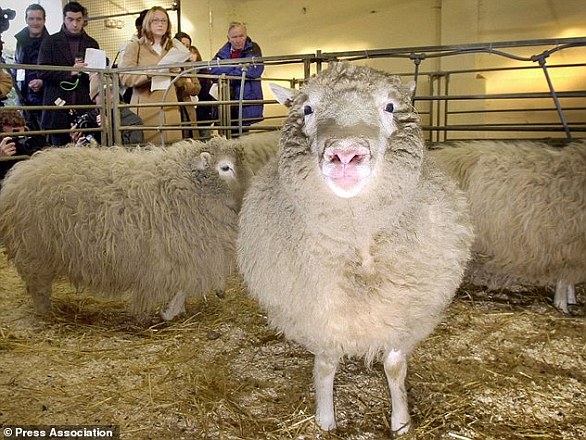Scientist who created Dolly the sheep dies at 79: Professor Sir Ian Wilmut dies five years after revealing Parkinson’s diagnosis – the condition that offered the cloned animal hope of a cure
>
Professor Sir Ian Wilmut, the scientist who led the team that cloned Dolly the Sheep, has died aged 79.
Described as a ‘titan of the scientific world’, the researcher’s death comes five years after he revealed he had been diagnosed with Parkinson’s disease – the condition for which Dolly held out hope of finding a cure.
She was the first mammal ever cloned from an adult cell.
When Professor Wilmut unveiled the sheep in 1997, it paved the way for possible stem cell treatments to tackle conditions such as Parkinson’s, a degenerative disease that affects more than 150,000 people in Britain.
Professor Sir Peter Mathieson, Principal and Vice-Chancellor of the University of Edinburgh, said: ‘We are deeply saddened by the passing of Professor Sir Ian Wilmut.
‘A titan of the scientific world’: Professor Sir Ian Wilmut, the scientist who led the team that cloned Dolly the Sheep, has died aged 79. He is pictured with Dolly in 1997
‘He was a titan of the scientific world and led the team at the Roslin Institute that cloned Dolly the sheep – the first mammal to be cloned from an adult cell – transforming scientific thinking at the time.
“This breakthrough continues to fuel many of the advances made in regenerative medicine that we see today.
“Our thoughts are with Ian’s family at this time.”
In 2018, Professor Wilmut said in an interview with the BBC that he had been diagnosed with Parkinson’s just before Christmas the previous year.
He added: ‘There was a sense of clarity, at least now we know and we can start doing things about it. And of course also the disappointment that it may shorten my life somewhat, and above all change the quality of life.’
Parkinson’s can cause a range of symptoms, including muscle stiffness and involuntary shaking.
Treatments can help alleviate the degenerative disease, but nothing can be done to slow or stop its progression.
More to follow

